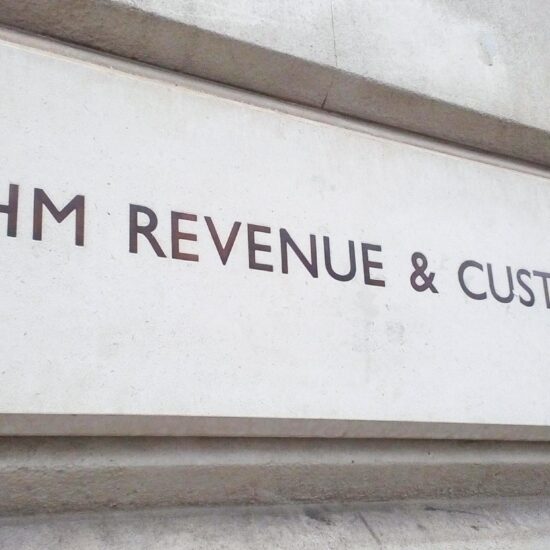When is an invoice not a VAT invoice?
by Jason Croke – VAT Director, Rayner Essex
A recent question on Any Answers enquired why suppliers issue invoices with “This is not a VAT invoice” displayed on them. Jason Croke delves into this VAT mystery.
An interesting question appeared on Any Answers earlier last month and what followed was a spirited debate about why suppliers issue invoices with “This is not a VAT invoice” clearly on the document. What relevance does this simple statement have in terms of VAT and what is the benefit to the supplier of doing this?
VAT is heavily driven by the tax point, the date when VAT must be declared on the VAT return.
The basic tax point for a supply of goods occurs on their removal/time of shipping. The basic tax point for a supply of services is when the services are performed. The basic tax point is always overridden by an actual tax point.
An actual tax point can be created before or after the basic tax point. An earlier tax point arises if the supplier issues a VAT invoice or receives a payment in advance of the basic tax point. A later tax point arises where the supplier issues a VAT invoice within 14 days after the basic tax point.
Get to the tax point
A tax point can only be created by the issue of a “proper” VAT invoice, which is defined within regulation 14 of the VAT Regulations 1995. In essence, the invoice needs to show name and address of supplier and customer, description of goods, supplier’s VAT number, tax point/date, VAT rate applicable (VAT time of supply Manual VATTOS5210).
In reality, most supplies are subject to an actual tax point created by the issue of a VAT invoice or receipt of a payment (or both). The basic tax point plays a pivotal role in determining the legal basis for an actual tax point. If for some reason an invoice is not issued or payment is not received, or they are delayed, the time of supply will, in most cases, revert to the basic tax point.
This is not a VAT invoice
Issuing an invoice that states “this is not a VAT/tax invoice” in theory does not create a tax point because it is not a VAT invoice and so the tax point shifts to when the invoice is paid. Once paid, the supplier must then issue a proper VAT invoice to the customer (usually on request).
For example, if you order something on 30 November, as a supplier you have to declare VAT in the November quarterly VAT return as the invoice is dated 30 November. Say you get paid for this invoice on 10 December. If you issue a “This is not a VAT invoice” invoice, then you can declare this sale on the next quarter. The initial invoice did not create a tax point and the receipt of money is the new (actual) tax point, so the business benefits from three months’ VAT cashflow.
This approach is also seen with pro-forma invoices. Issuing a pro-forma invoice does not create a (basic) tax point. Once the customer pays, whether in part or in full, this then creates an actual tax point and the supplier issues a proper VAT invoice. Issuing this proper VAT invoice means the supplier now needs to declare output tax to HMRC and the customer, if eligible, can reclaim VAT.
Whether the business goes the pro-forma route or the “This is not a VAT invoice” route, both achieve the same result, shifting the tax point to the date when payment is received, both require the issuing of an initial document (pro-forma/not an invoice) followed by a proper invoice, so there is more administration required, but in doing so there are potential cashflow benefits.
The benefits
For goods, the benefits are negligible. Most businesses will require payment before goods are shipped, so the actual tax point is clear. Where goods are shipped on account, the supplier must issue a proper invoice within 14 days of shipping or on receipt whichever occurs first, else the basic tax point kicks back in.
For services, the benefits are that the supplier can delay paying output tax on their supply until such time as the customer pays the invoice. It is no different to issuing a pro-forma followed by a proper VAT invoice. The benefit for the supplier is cashflow.
Pro-formas are usually used in a business-to-business context. In the construction industry they are often called interim certificates, but are essentially the same thing – a document that doesn’t create a tax point until payment is made.
“This is not a VAT invoice” is more often seen in the business-to-consumer sphere, most commonly with mobile phone contracts, which are often taken out in the personal name of a director or employee and then claimed via expenses. For the mobile phone network their customer is an individual, not a business, the network issues a “not a VAT invoice” document and needs only declare output when the customer pays.
If you look at your Sky/Virgin TV invoices or your home telephone/mobile you will see similar “not a VAT invoice” wording. Of course as a consumer, these suppliers are not expecting the customer to ask for a VAT invoice, nor do they have to supply one automatically but must if requested by the consumer. This is usually a rare request.
Administrative burden
These rules are available to any VAT-registered business. The idea of issuing a pro-forma followed by a proper invoice or a “not a VAT invoice” issue may have been an administrative burden in the past. Nowadays, with the popularity of cloud/accounting software (driven by MTD for VAT), it is probably a lot easier to issue pro-forma, requests for payments, interim certificate through the software and then issue follow up proper invoices thereafter, than was perhaps possible in the old days when invoices had to be typed by hand or produced manually in Word.







